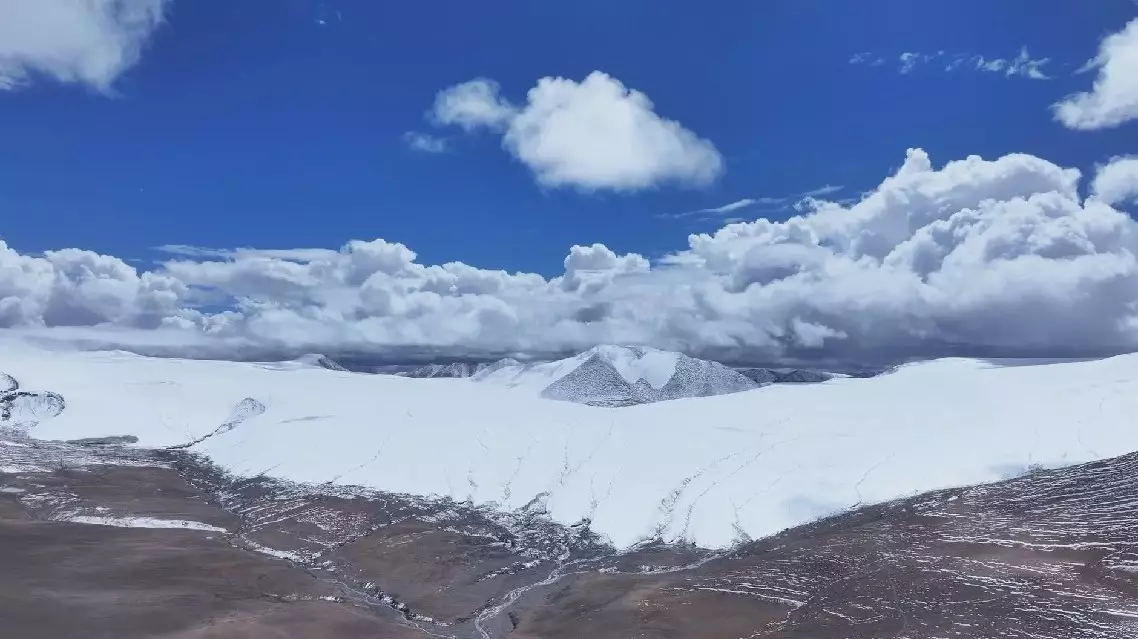A giant panda exploring a cardboard box, being startled and running away was caught by cameras at a breeding base in southwest China's Sichuan Province.
The footage, released on Aug 13, caught four-year-old female giant panda E Mei occupied with a cardboard box, which is given as a toy for her.
In the video, E Mei curiously uses her paws, nose and teeth to check the box over and over again. Then she gets startled suddenly, but then keeps trying to find out what it is.
Ultimately she tries to bite the strange object, before it rolls and startles her again, and then she falls down in escape.
Released by the iPanda channel, this hilarious peek into the daily life of the lovable black-and-white bear at the Dujiangyan Base of China Conservation and Research Center for Giant Pandas was filmed on Aug 9.
The center stands as a global leader in preserving and breeding the panda population, as well as reintroducing these endangered animals into their natural habitat. The center has also established a global platform for promoting international cooperation and exchanges involving 18 zoos from 16 countries and regions, 39 domestic animal breeding institutions, and more than 10 scientific research institutes.

Video showing giant panda exploring cardboard box at Sichuan base
China's scientific expedition team on Thursday obtained critical ice cores during their investigation of the Qinghai-Xizang Plateau, which is known as Asia's "water tower".
The region encompasses "one glacier, two lakes and three rivers". It is home to Purog Kangri Glacier, the world's largest glacier in the mid to low-latitude regions, as well as Siling Lake and Namtso Lake, the largest and second-largest lakes in Xizang, respectively. It is also the birthplace of the Yangtze River, Nujiang River and Yarlung Zangbo River.
The climate in the region is complex and changeable, and its ecosystem is very fragile, and meanwhile it is a pivotal area for Xizang's economic and social development.
During their expedition, the team drilled for ice cores at different depths overnight on Thursday, aiming to capture climate records from different time scales.
Ice core drilling is typically conducted during the night and early morning when the ice temperature is sufficiently low.
Ice cores serve as vital records of global climate and environmental changes. The sediments and bubbles within these cores are clues to understanding the history of Earth's climate. By studying the bubbles captured in ice cores, scientists can analyze atmospheric composition, including carbon dioxide levels, over hundreds of thousands of years.
Yao Tandong, an academician at the Chinese Academy of Sciences (CAS) and leader of the expedition, and Lonnie Thompson, a renowned American glacier expert and foreign academician at CAS, conducted their scientific expedition on the glacier Thursday morning.
Through helicopter observations, thickness-measuring radar, satellite image comparison and other methods, the scientific expedition team has found that the surface area of the Purog Kangri Glacier has shrunk by 10 percent over the past 50 years.
The average altitude of Purog Kangri Glacier is 5,748 meters, with the highest point reaching 6,370 meters. Due to global warming, the glacier is melting rapidly.
"So does the melting of glacier surface -- the higher the altitudes, the less the ablation volume, while at lower altitudes, it accumulates and forms branch-like rivers on the ice surface. Currently, these branches extend up to altitudes of 6,000 meters," said Xu Baiqing, a research fellow of the Institute of Tibetan Plateau Research under the CAS.
Research indicates that the accelerated retreat of glaciers on the Qinghai-Xizang Plateau over the past 40 years reflects a broader trend, and the melting rate of the Purog Kangri Glacier is relatively slow compared to the overall situation of the plateau.
The temperature changes within the glacier also attributed to the great difficulty of drilling, said Xu.
"Due to climate warming, the temperature within the glacier has risen, which suggests that under the same backdrop of temperature variations, the ablation may show abrupt shift with accelerating growth," said Xu.
The expedition was launched on Aug 18, 2024 and is scheduled to continue until October.

Scientists obtain critical ice cores during expedition in Qinghai-Xizang Plateau










